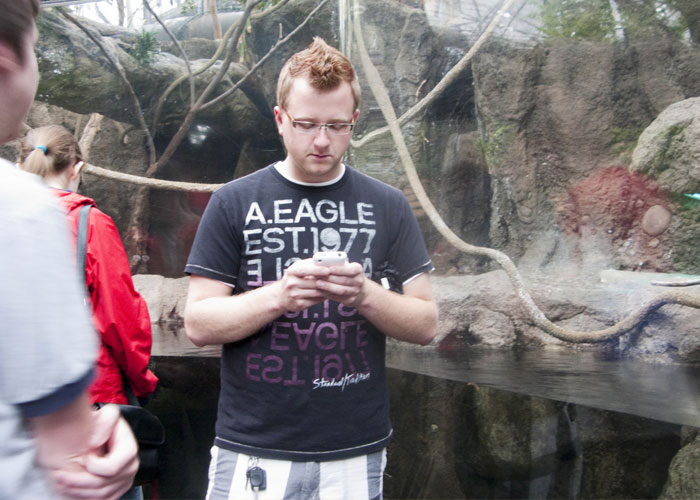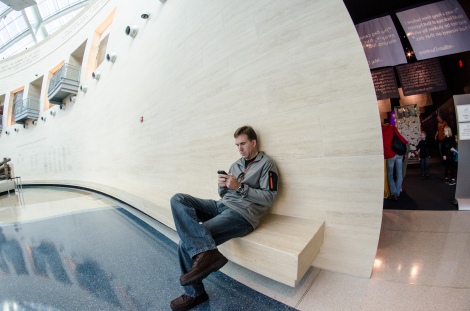Sex, Smart Phones, and Destination Visitors
9% of U.S. adults interact with their cell phones during sex, according to a recent study.
Did that crazy statistic get your attention? Because getting and holding your attention, it turns out, is becoming more challenging.
This same study by Harris Interactive also cited 12% of Americans using their phones in the shower, 19% in church, and 32% at a child’s school function. Numerous other studies have identified addictive patterns of behavior with phones. Smart phones stave off boredom, create a higher quantity of social interactions, and provide a seemingly unlimited font of information.
As smart phones get smarter with more functions, some believe that our phones are actually reprogramming us. Many researchers believe that technology has dramatically decreased the average person’s attention span in recent years.
In other words, smart phones are changing the way we interact with others and the world around us. And they compete for our attention with the physical experiences we are having.
Anyone who operates a destination knows this. We could provide visitors with access to the Ark of the Covenant, a newly discovered species, a one-on-one with Neil deGrasse Tyson, or a thrill ride that defies the laws of physics… and they will still steal glances into the cool blue light of their phones.
So we did our own study: Digitizing Destinations 3.0, available HERE. In this nationwide research project, we examined uses and applications of technology in destination environments, from influences of technology, visitor attitudes, and the types of technologies most guests would like to see used.
And of course, we explored the role of smart phones. Specifically, we wanted to know what visitors were doing when they looked at their phone in your destination:
- 48% are texting a friend about their experience.
- 42% are looking up information related to the attraction.
- 40% are posting/leaving an image on social media regarding their experience.
- 40% are checking email, although only 29% were responding to those emails.
It’s also important to note what they aren’t doing: less than 15% are listening to music, and less than 10% are reading unrelated content. 4% of them said that they were chatting with friends on something unrelated to their visit – although this percentage is distinctly higher in theme parks and water parks (11%).
So in other words, while the phones are surely competing for your guests’ attention, a significant amount of this attention is focused on sharing the experience in real time, navigating the destination, and seeking additional layers of richness.
Under the right circumstances, the phone is an enhancement of the experience.
These statistics represent across-the-board results, with all visitors. But if we look deeper, can we identify psycho graphic patterns that enable us to create distinct classes of visitors? We came up with three such sets:
Technology Enthusiast – 47% of Visitors: Engages in and is influenced by all forms of technology. They are most likely to have a smart phone in their hand, they use social media, they booked online, and will absolutely be telling their friends about the experience. They are also most likely to have a college degree or advanced education, and will have the most people with them in their group.
Technology Critic – 41% of Visitors: Own mobile devices, but use them judiciously. They’re much less engaged in social media channels, and won’t try to influence their followers. They are the oldest of the three segments, and interestingly are less likely to be repeat visitors. Half of them won’t have a smart phone with them when they are at your destination.
Technology Conflicted – 12% of Visitors: Aren’t really sure where they stand on technology. They are the youngest adult demographic and use their mobile devices a lot, but seem concerned about over saturation and the prevalence of technology in our lives. Most of them are women traveling with small families, and are the most likely repeat visitors.
Most of our clients are taking strides towards integrating the use of smart phones in their destinations. But as phones get smarter, guests are living in two destinations simultaneously – a physical and a digital destination.
For more information, check out Digital Destinations 3.0.




